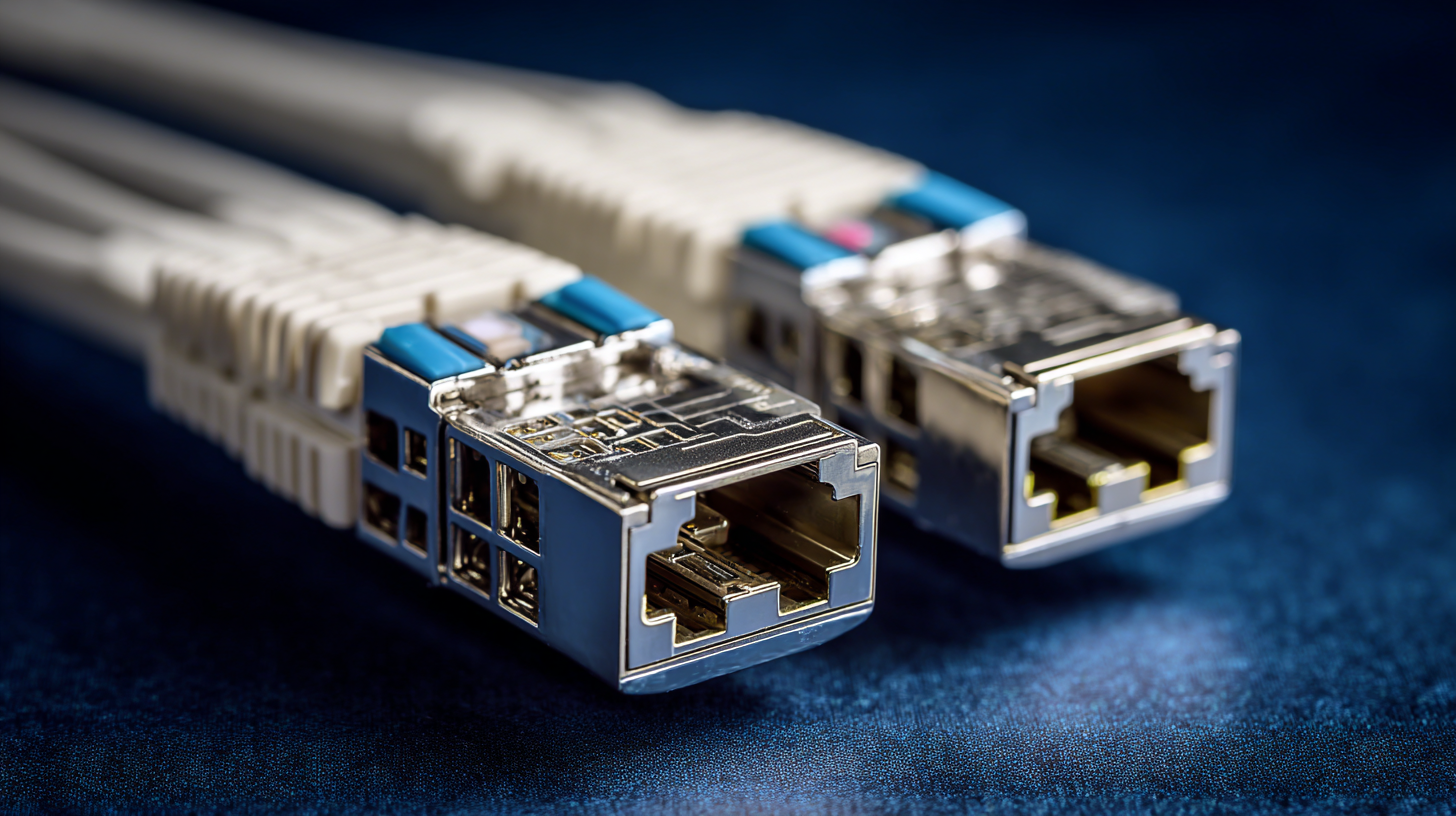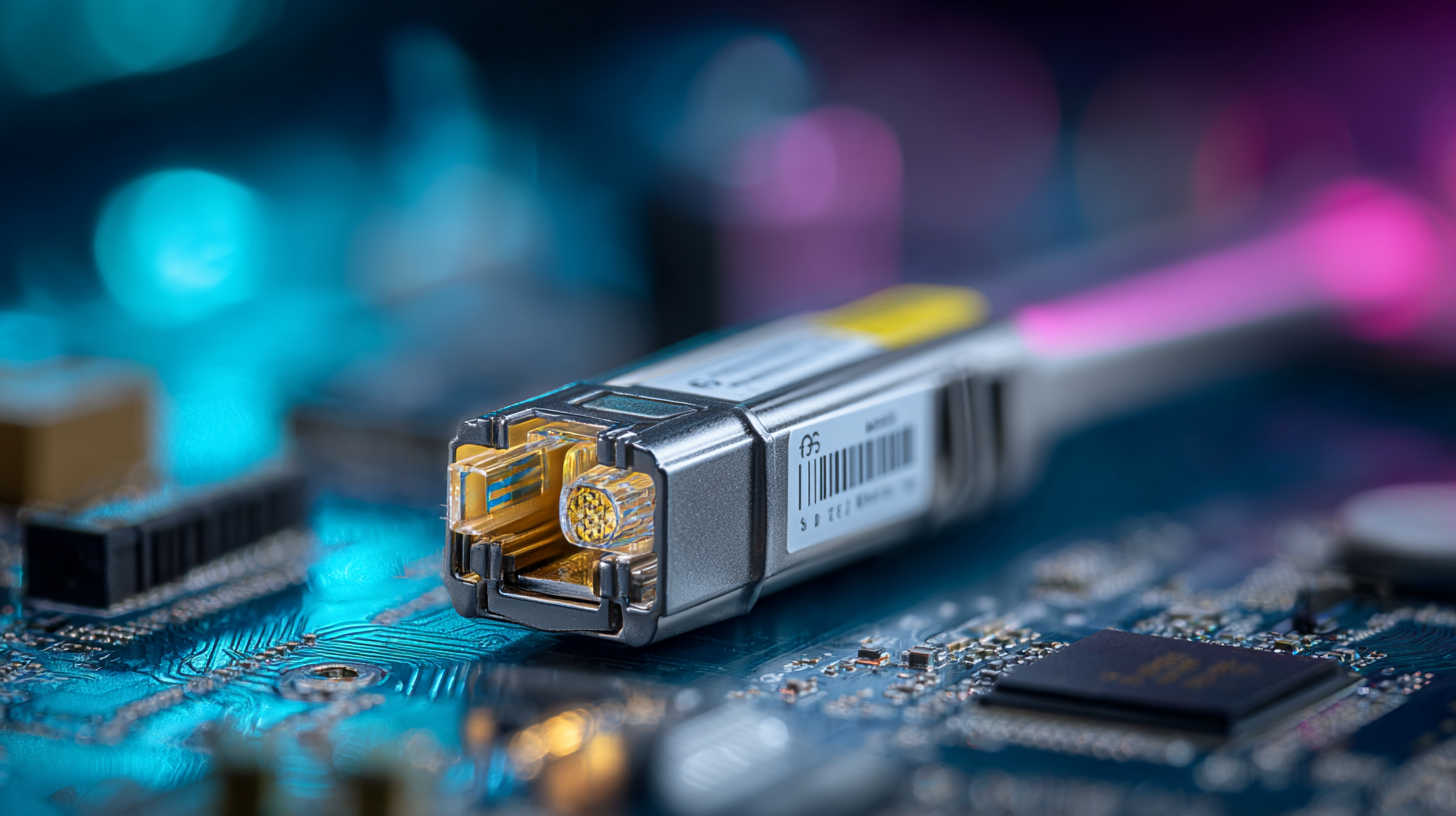Leave Your Message
In today's fast-paced digital landscape, the demand for high-speed data transfer continues to surge, positioning the 10GbE SFP+ transceiver as a pivotal component in modern networking solutions. According to a report by MarketsandMarkets, the global market for optical transceivers is projected to reach $9.42 billion by 2025, with a significant portion driven by the increasing adoption of cloud computing and data centers. As organizations worldwide seek to enhance their network performance, high-quality, reliable 10GbE SFP+ transceivers are essential for ensuring seamless connectivity and efficient data flow. In this definitive guide, we will explore the top 10GbE SFP+ transceivers available today, showcasing options from exceptional Chinese manufacturers recognized for their commitment to quality and innovation, ultimately serving global buyers in their quest for superior networking solutions.

When selecting 10GbE SFP+ transceivers, buyers must consider several critical features to ensure compatibility and performance. One key aspect is the transceiver’s laser type, which can significantly influence the distance and speed of data transmission. Single-mode transceivers typically support longer distances, up to 40 kilometers or more, while multimode options are preferred for shorter distances, commonly used within data centers. Additionally, the thermal management of the transceivers is crucial, as overheating can lead to performance degradation and reduced lifespan.
Another essential factor is the form factor and compatibility with network switches and routers. Most modern network equipment supports standardized SFP+ transceivers; however, some may have specific compatibilities with brands and models, which can affect performance. Reports indicate that the market for 10GbE solutions is expanding, driven by increasing demands for high-speed data transfer and agile network infrastructures. For instance, implementation of 10GbE in enterprise environments has seen significant growth, attributed to the rise in cloud computing and virtualization trends. With the right combination of features, enterprises can optimize their networks for better performance and efficiency.
| Model | Form Factor | Distance | Wavelength | Data Rate | Operating Temperature |
|---|---|---|---|---|---|
| SFP-10G-SR | SFP+ | Up to 300m | 850nm | 10Gbps | 0°C to 70°C |
| SFP-10G-LR | SFP+ | Up to 10km | 1310nm | 10Gbps | 0°C to 70°C |
| SFP-10G-ER | SFP+ | Up to 40km | 1550nm | 10Gbps | -5°C to 70°C |
| SFP-10G-ZR | SFP+ | Up to 80km | 1550nm | 10Gbps | 0°C to 70°C |
| SFP-10G-LRM | SFP+ | Up to 220m | 1310nm | 10Gbps | 0°C to 70°C |
| SFP-10G-CU | SFP+ | Up to 5m | N/A | 10Gbps | 0°C to 70°C |
In the realm of high-speed networking, choosing the right 10GbE SFP+ transceiver can significantly impact performance and reliability. Our comparative review highlights leading brands such as Cisco, Finisar, and Mellanox, which have garnered attention for their exceptional quality and compatibility. According to a recent market report by Dell’Oro Group, the demand for 10GbE transceivers is projected to grow by 8% annually, driven by increasing data center expansion and cloud services. This trend underscores the importance of selecting a transceiver that not only meets current needs but also accommodates future network demands.
When evaluating transceiver brands, consider both technical specifications and compatibility with your existing infrastructure. Tips for maximizing efficiency include looking for SFP+ transceivers that offer energy efficiency ratings and lower latency connections. For example, using transceivers with superior thermal management can enhance overall system performance, as highlighted in the latest analysis from Ciena. Additionally, ensure that your choices are compliant with the Multi-Source Agreement (MSA) to guarantee interoperability among various devices.
As you navigate through options, remember to review warranty terms and customer support services offered by manufacturers. A solid warranty can provide peace of mind, as indicated by a survey from Synergy Research Group, which revealed that 70% of enterprises prioritize vendor support in their purchasing decisions.
This bar chart compares the performance of top 10GbE SFP+ transceivers, showcasing their respective speeds. The data reflects real-world performance metrics to help buyers make informed decisions.
 When evaluating SFP+ transceivers, performance testing is essential to ensure optimal network efficiency and reliability. According to the Ethernet Alliance, a comprehensive analysis should encompass parameters such as latency, throughput, and error rates. Recent studies indicate that high-quality SFP+ transceivers, like the ones made by Cisco and Arista, can achieve latencies as low as 100 microseconds while maintaining a throughput close to 10 Gbps. These benchmarks highlight their capability to handle data-intensive applications and large volumes of traffic, crucial for modern enterprises.
When evaluating SFP+ transceivers, performance testing is essential to ensure optimal network efficiency and reliability. According to the Ethernet Alliance, a comprehensive analysis should encompass parameters such as latency, throughput, and error rates. Recent studies indicate that high-quality SFP+ transceivers, like the ones made by Cisco and Arista, can achieve latencies as low as 100 microseconds while maintaining a throughput close to 10 Gbps. These benchmarks highlight their capability to handle data-intensive applications and large volumes of traffic, crucial for modern enterprises.
Additionally, error performance is a critical measurement in the assessment of SFP+ transceivers. The Optical Internetworking Forum (OIF) emphasizes that a robust transceiver design can lead to a Bit Error Rate (BER) of better than 10-12, ensuring data integrity across long distances. Test scenarios simulating real-world conditions reveal that leading transceivers can sustain stable performance even under varying temperatures and electromagnetic interference. As the demand for reliable connectivity grows, understanding these performance metrics will enable global buyers to make informed decisions that align with their specific network needs.
When considering the purchase of 10GbE SFP+ transceivers, understanding the cost structure is essential for global buyers. The price of these solutions can vary significantly based on factors such as brand reputation, operational efficiency, and compatibility with existing systems. On average, while generic models may start around $30, reputable branded options can soar up to $150 or more. This premium often reflects better reliability, extended warranty periods, and robust customer support.

Tips for savvy buyers include comparing the specifications of different transceivers and assessing their compatibility with your existing infrastructure. Additionally, consider the total cost of ownership beyond just the initial purchase price; factors such as energy consumption, maintenance, and potential upgrade costs should all be factored into your analysis.
Furthermore, it's wise to explore bulk purchasing options, as many suppliers offer discounts for large orders. Don’t hesitate to inquire about refurbished models, which can provide significant savings without compromising performance. Keeping these factors in mind will ensure that you make an informed decision while navigating the competitive market of 10GbE SFP+ solutions.
When installing 10GbE SFP+ transceivers, it's crucial to pay attention to the details to ensure optimal performance. One of the key tips is to handle the transceivers with care, avoiding direct contact with the optical interfaces. Always use appropriate ESD (Electrostatic Discharge) precautions, such as grounding yourself before handling the modules. This helps prevent damage from static electricity and ensures longevity.
Another essential practice is to confirm compatibility with your network equipment. Not all SFP+ transceivers work with every switch or router, so refer to the manufacturer's compatibility list before making a purchase. Additionally, proper seating of the transceiver in the slot is vital; it should fit snugly without forcing. If it appears misaligned, gently remove and reseat it to avoid connectivity issues.
Finally, consider environmental factors during installation. Ensure that the operating temperature and humidity levels are within the specifications provided by the transceiver manufacturer. Proper ventilation is also important; avoid enclosing the equipment in tight spaces where heat can build up, which could affect performance and lifespan. Following these tips will help you achieve reliable connectivity with your 10GbE SFP+ transceivers.
